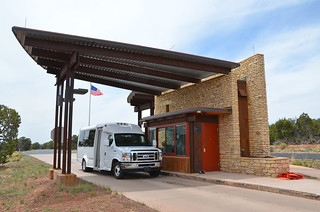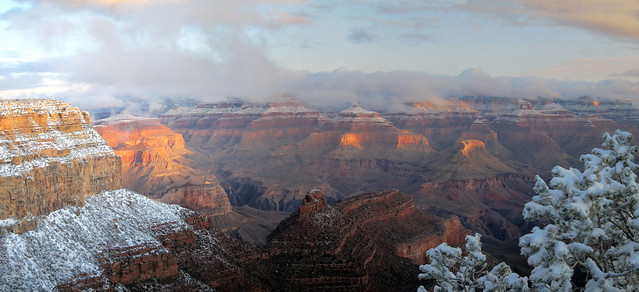 |
| Grand Canyon NPS on flickr.com |
While the greatest number of visitors will be affected by hikes in some park gate fees, for some in the RVing community, this won't amount to a change. Folks holding Golden Age passes, or disabled travelers with Golden Access permits don't pay any fees to enter National Parks. And with gate fees, how much the price increases will amount to depends on the park itself.
Heading into some of the bigger attraction parks, the fee increases look to be on the lower side. For example, Rocky Mountain National Park in Colorado will see a jump in gate fees from the current $20 to $30. But 300 miles down the road at the lesser-visited Great Sand Dunes National Park, admission fees will multiply two and a half times. But the pain may be less – Grand Sand Dunes currently charges a $3 per head admission rate, the proposed rate of $10 – less than the cost of a matinee – may not seem so bad.
But gate fees aren't the only fees headed for the trampoline. California's Yosemite National Park family campground fees haven't changed since 2006. Those $5 to $20 per night fees will jump from $6 to $24. Assuming the $5 sites become $6, and the $20 jumps to $24, that's still only a 20 percent increase. But camp site fees in other parks would take a much bigger leap: Lake Roosevelt in Washington State will see an 80 percent overnight fee jump, from $10 to $18.
In his memorandum to regional supervisors, Jarvis tried to encourage the troops to drum up support for the fee increase proposals, suggesting that the agency would take flack from some over the increases. In some areas, there seems to be a cautious – but not necessarily negative – reaction on the part of park guests. On a social media network page put up by the Lake Roosevelt National Recreation Area, one commenter said, "Seems reasonable – all other expenses have increased greatly since 1995. Not everyone was supportive. On the same site a writer commented, "Don't limit access with regressive fees. There is plenty of fat to cut in the federal budget. Start by cutting bloated congressional and senate pensions."
Reaction to the fee increase proposals may tend to swing on an understanding of where the collected dollars go. Unlike many government agencies, fees collected by the Park Service are part of the Federal Lands Recreation Enhancement Act, which mandates the fees aren't returned to Washington, but rather are kept at the park itself, to be used for local improvements. With maintenance backlogs in almost all parks, its clear fees won't be contributing to lawmaker pensions – bloated or otherwise.
There is a fly in the ointment: Public comments on the fee increase proposals are being sought. But instead of having a central point for comments to be made on a system-wide basis, they're being handled by each individual park. Tracking down which of the parks is considering a fee hike can be frustrating. If you're concerned your favorite park or parks may be one of them, first, visit the park website. Still not sure? A call to the park's headquarters should give you the information you need.



 Keep stuff in place
Keep stuff in place
